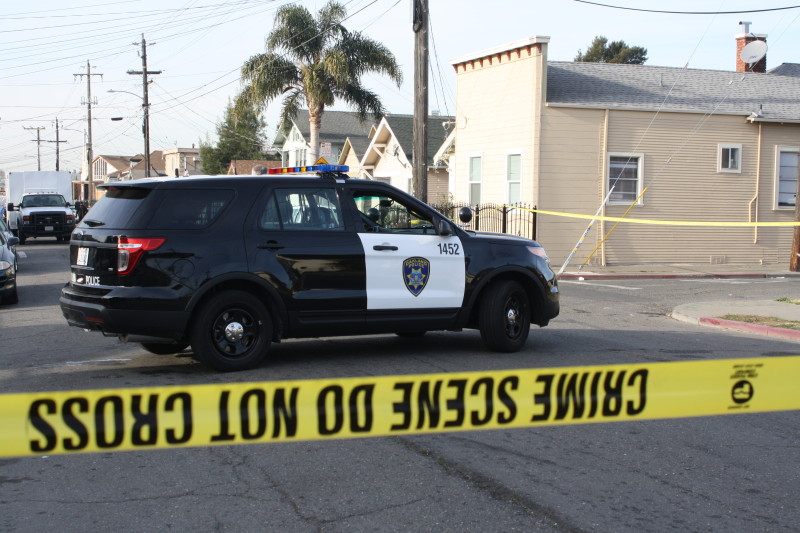That year also registered as the city's worst for the crime since at least 1969. Cops, criminologists and community leaders disagree about what is driving the ups and downs in the city's crime rates.
Gangs or Gentrification?
Oakland Police Chief Sean Whent says Oakland's 50 or so gangs shifted the way they make money -- from drugs to, in part, robberies.
"We used to get significantly more drug hotline calls than we do now," says Whent, "many more calls about street drug dealing. And that's really reduced. And so what have those groups and gangs done? Well, we have seen the increase obviously in the street robberies and fraud crimes."
Whent says police had some success curbing those robberies in 2014. He points to Ceasefire, the city's chief anti-violence strategy. Its purpose is to reduce homicides, which fell 10 percent last year. But Whent says the heavy focus on certain gang members is turning the robbery rate around, too.
Youth Uprising Director Olis Simmons is skeptical of Whent's view that gangs were responsible for the increase in robbery.
"Big-time crime syndicates went away 20 years ago," says Simmons, "What we see is acts of desperation. People are robbing their neighbors, their community members, out of hunger."
She and other Oakland community leaders say the surge in robberies was more like a canary in the coal mine. A sign that as Oakland enters its so-called renaissance, the economic gap is widening.
"While Oakland is realizing the dream of economic vitality -- a renaissance right? -- sadly, there is a concentration of people who are locked out," says Simmons.
She says she thinks for many years those people, largely in East and West Oakland, felt that as the city did better, their neighborhoods would also turn around; they'd get a job, maybe a store would open.
"The realization that it's never going to happen for (them) is what's new," she says.
Simmons says the best way for Oakland to fight crime is by helping the community. That means helping kids like Morris, who says he empathizes with the people who stole from him.
"It just be the lack of having, like, because if a kid got everything he needs, he don't need to be in no gang, he don't need to be out here stealing. Why?" asks Morris, "'Cause he got his own. But somebody else that ain't got nothing to take. … 'Hey, What I'm gonna lose? Go to jail? I ain't got nothing out here anyway.' "
A power relationship
But none of that reasoning convinces UC Berkeley crime expert Franklin Zimring. The first thing to know about robbery, he says, is that it's usually not about money.
"You go into a 7-Eleven store and you come out with $93. And for this you're risking 10 years of your life in Pelican Bay," says Zimring, a law professor at Cal.
He says robbery as a criminal career nets vastly less than minimum wage.
"Robbery is on a risk/reward basis literally the worst way of making a criminal living you can imagine," he says. "So you have to think that there's a mix of recreation and power and a playing out of envy."
Many cities face the pressures of gentrification and displacement, but not all of them can claim Oakland's distinction of robbery capital of the U.S. for three consecutive years, according to the latest FBI data.
So how does Zimring explain the uptick? High-status recreation, he says, or put more simply, a fad.
And when it comes to the drop, he says crediting Ceasefire might be wishful thinking. Zimring says catching even a few robbers could account for last year's dip. Others who study crime, such as UCLA's Mark Kleiman, agree, saying that nearly 5,000 robberies could easily be accomplished by just 100 people over the course of a year.
Meanwhile, the statistics reveal just how hard it may be for Oakland to reduce crime overall. As robberies dropped last year, drug crimes rose once again, by about the same percentage.
